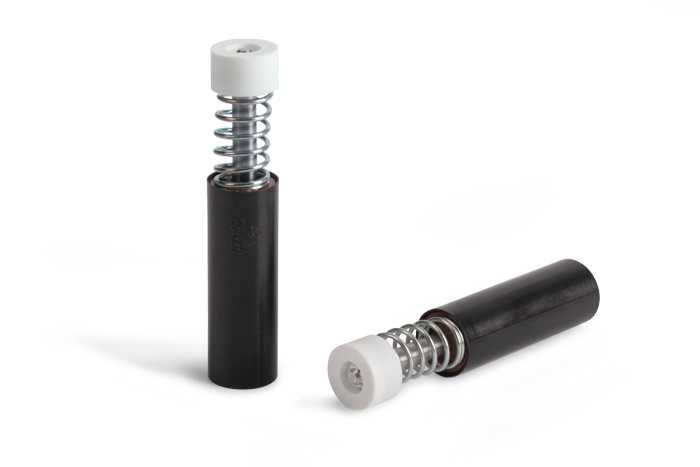How do linear hydraulic dampers work?
In a linear hydraulic damper, the kinetic energy of the moving object is transferred through the steel rod to the valve inside the damping cylinder. The hydraulic fluid is pushed through the valve, generating friction: when the spring returns the valve to its original position, the hydraulic fluid flows back into the damping chamber.
Linear dampers work in one direction only, as the viscous fluid only exerts resistance in one direction.
For example, it is common for the door of a cupboard to only move more slowly when closing: in this case a linear damper is preferred.
Where are they used?
Thanks to their versatility and adjustable resistance, linear dampers facilitate movement and can be installed on a number of different objects in many sectors: furniture and electronics - such as in ovens, refrigerator doors, and rubbish bins - but also in cars, for example in the central armrests.
Search for the damper that's right for you
or contact us for a customized solution.


